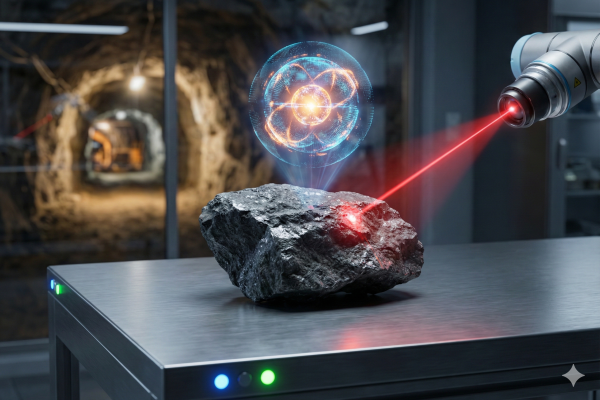May 31st, 2023 | 08:15 CEST
Bright prospects - GoviEx Uranium, Cameco, Uranium Energy
Germany is taking a unique path in the green energy mix and, after shutting down the last three reactors, is doing without nuclear energy altogether. In contrast, global nuclear power capacities are steadily increasing, with 60 reactors currently under construction. Politicians in North America are supporting the expansion with programs worth billions to support the domestic uranium sector and, at the same time, minimize dependence on Russia.
time to read: 3 minutes
|
Author:
Stefan Feulner
ISIN:
GOVIEX URANIUM INC A | CA3837981057 , CAMECO CORP. | CA13321L1085 , URANIUM ENERGY DL-_001 | US9168961038
Table of contents:
Author
Stefan Feulner
The native Franconian has more than 20 years of stock exchange experience and a broadly diversified network.
He is passionate about analyzing a wide variety of business models and investigating new trends.
Tag cloud
Shares cloud
Advantages clearly evident
Of course, many people still remember the terrible events at Three Mile Island in 1976, Chernobyl in 1986 and Fukushima in 2011. But the technology has advanced significantly in recent decades to provide a much higher level of nuclear safety. It is considered the safest source in the world in 2023 compared to both fossil and renewable energy sources. One of the advantages why the international community is backing carbon-free power generation via nuclear energy is its small land footprint.
Although nuclear power produces enormous amounts of carbon-free electricity, it generates more on significantly less land than any other source. For example, an average 1,000-MW nuclear power plant in the US requires about 2.6 sq km of land. To produce the same amount of electricity, wind turbines require 360 times more land area, and photovoltaic systems take up 75 times more space. To visualize this, it would take more than 3 million solar panels to produce the same amount of electricity as a typical commercial reactor or more than 430 wind turbines. Moreover, because of the high energy density of the uranium required, a uranium fuel pellet the size of a gummy bear generates as much energy as 1t of coal, 149 gallons of oil or 481.38 cubic metres of natural gas.
Dependence overwhelming
Since the start of the war of aggression and the looming energy crisis, there has been a change in thinking, which is likely to bring about a turning point not only in the uranium market. The primary goal of Western governments is now to minimize their dependence on Russia and China. And it is precisely in the procurement of uranium oxide that the USA's dependence on countries like Kazakhstan or Russia is enormous. While the United States bought more than 45 million pounds of uranium in 2021, making it the world's largest consumer, domestic production was a tiny 21,000 pounds of uranium oxide U3O8. Domestic production is thus not even remotely sufficient to meet the needs of the country's nuclear power plants. Based on data from the World Nuclear Association, the largest imports came from Kazakhstan (35%), Canada (15%), Australia (14%), Russia (14%) and Namibia (7%).

North American companies benefit
The primary beneficiaries of the government programs are domestic uranium producers such as Cameco, Uranium Energy and exploration companies like GoviEx Uranium. Canadian mining company GoviEx is on its way to becoming an African producer, with a substantial resource inventory of over 130 million pounds of U3O8 in measured and indicated categories and 89.3 million pounds in the inferred category. GoviEx holds two prospective properties, the Madaouela Project in Niger and the Muntanga Project in Zambia, which have all major mining permits.
The Madaouela project hosts one of the largest uranium resources in the world, with 100 million pounds of uranium oxide in measured and indicated mineral resources, plus inferred resources of 20 million pounds. This is backed by the government of Niger, which itself owns 20% of the property. Production is expected to start here in 2025. The 2022 feasibility study yielded a net present value, after deducting 8% tax, of USD 140 million at an internal rate of return of 13.3%. With a mining rate of 2.60 million pounds per year and an expected mine life of 19 years, there would be the potential to produce 50.8 million pounds of uranium oxide.
The feasibility study is underway at the Muntanga project in Zambia and is expected to be expanded after the successful 2022 drilling program to allow for detailed engineering design and construction. At the Dibbwi East deposit on Muntanga, a 15,500 m infill drilling program has been carried out aimed at converting the current 29 million pounds of U3O8 from inferred to indicated resources. In the coming weeks, GoviEx Uranium plans to provide an update on its mineral resource estimate.
Daniel Major, CEO of GoviEx, commented: "Our continued progress at the Muntanga uranium project reflects our commitment to responsible and sustainable development in Africa. With the completion of our ESIA and Feasibility Study scheduled for 2024, we are well positioned to advance this project towards near-term production."
The Canadians secured about CAD 15 million for further exploration and engineering work via a previously announced buy-deal private placement. In the wake of the corporate action, GoviEx's share price fell to a new low for the year at CAD 0.125 but is in a strong long-term support area.
While Germany is disarming concerning nuclear energy, more and more reactors are being built in Western industrialized countries. Policymakers, especially in North America, are promoting the uranium industry, which should benefit current and future producers like GoviEx Uranium enormously.
Conflict of interest
Pursuant to §85 of the German Securities Trading Act (WpHG), we point out that Apaton Finance GmbH as well as partners, authors or employees of Apaton Finance GmbH (hereinafter referred to as "Relevant Persons") may hold shares or other financial instruments of the aforementioned companies in the future or may bet on rising or falling prices and thus a conflict of interest may arise in the future. The Relevant Persons reserve the right to buy or sell shares or other financial instruments of the Company at any time (hereinafter each a "Transaction"). Transactions may, under certain circumstances, influence the respective price of the shares or other financial instruments of the Company.
In addition, Apaton Finance GmbH is active in the context of the preparation and publication of the reporting in paid contractual relationships.
For this reason, there is a concrete conflict of interest.
The above information on existing conflicts of interest applies to all types and forms of publication used by Apaton Finance GmbH for publications on companies.
Risk notice
Apaton Finance GmbH offers editors, agencies and companies the opportunity to publish commentaries, interviews, summaries, news and the like on news.financial. These contents are exclusively for the information of the readers and do not represent any call to action or recommendations, neither explicitly nor implicitly they are to be understood as an assurance of possible price developments. The contents do not replace individual expert investment advice and do not constitute an offer to sell the discussed share(s) or other financial instruments, nor an invitation to buy or sell such.
The content is expressly not a financial analysis, but a journalistic or advertising text. Readers or users who make investment decisions or carry out transactions on the basis of the information provided here do so entirely at their own risk. No contractual relationship is established between Apaton Finance GmbH and its readers or the users of its offers, as our information only refers to the company and not to the investment decision of the reader or user.
The acquisition of financial instruments involves high risks, which can lead to the total loss of the invested capital. The information published by Apaton Finance GmbH and its authors is based on careful research. Nevertheless, no liability is assumed for financial losses or a content-related guarantee for the topicality, correctness, appropriateness and completeness of the content provided here. Please also note our Terms of use.




